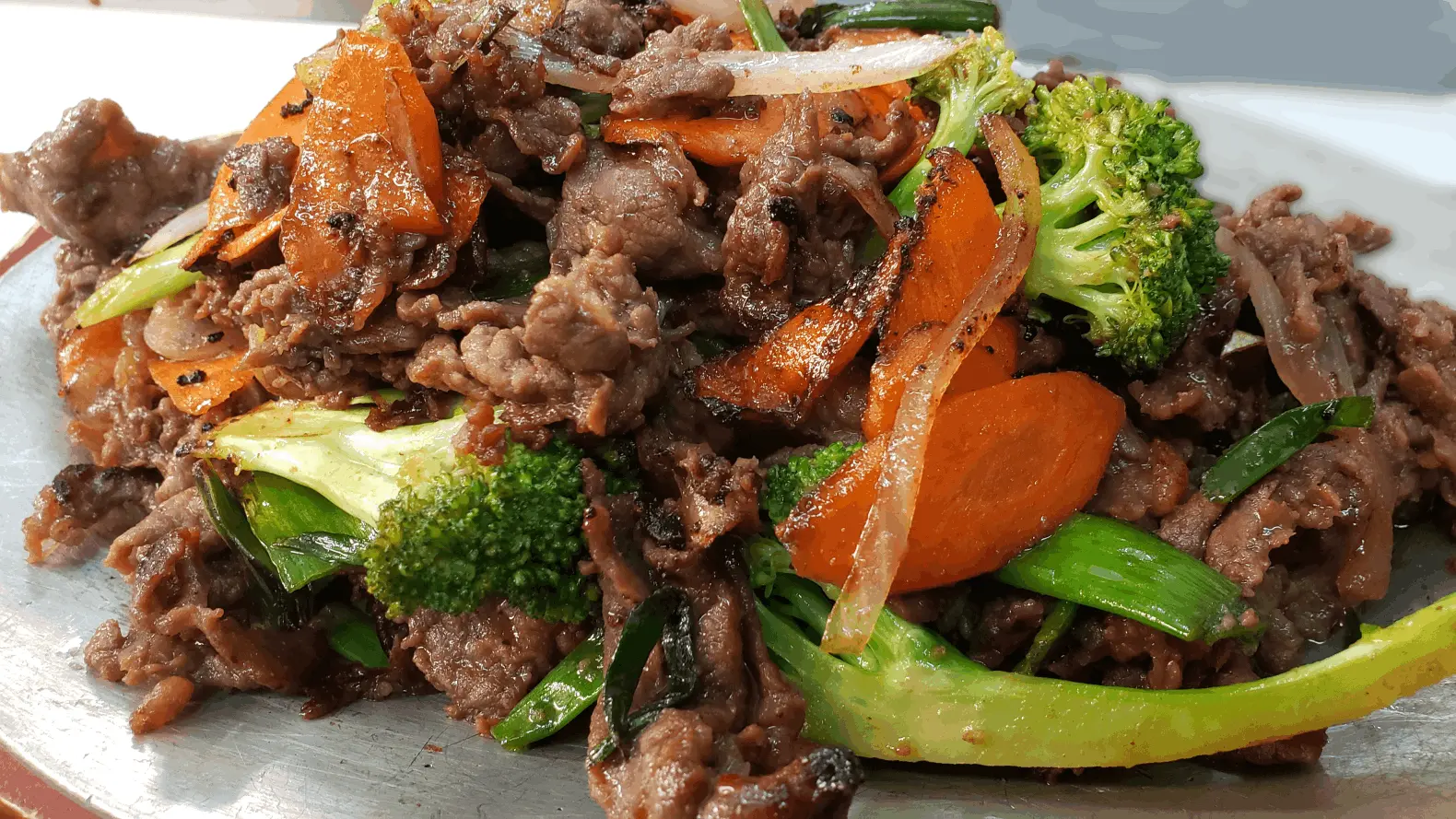Bulgogi: Korea's "Fire Meat" is More Than Just Beef

Article by Gil "hannaone"
© Copyright 2024. All rights reserved.
Image by hannaone: Bulgogi Stir Fry
Introduction to Bulgogi
Bulgogi, known as Korea's "fire meat," is a traditional Korean dish renowned for its mouthwatering flavors and tender texture. This iconic dish features thinly sliced beef marinated in a blend of savory, sweet, and nutty flavors, creating a harmonious balance that tantalizes the taste buds.
Bulgogi is a popular staple in Korean cuisine, cherished for its versatility and rich cultural significance. Whether grilled, stir-fried, or braised, bulgogi never fails to captivate with its delightful aroma and irresistible taste.
History and Origin of Bulgogi
The history of bulgogi dates back to the Goguryeo era in Korea, around 37 BC to 668 AD, making it a dish with ancient roots.
Originally, this dish was prepared using wild game, such as boar or deer, and seasoned with soy sauce, garlic, and other indigenous ingredients.
When the major Korean polities adopted Budhism, bulgogi as a meat dish nearly disappeared. During this period vegetable alternatives were prepared using the same techniques.
The Mongol invasions ended proscriptions against slaughtering, and brought meat back to the Korean menu.
Over time, beef became the preferred choice for this dish, and it evolved with the introduction of new cooking techniques, such as grilling over open flames or on a sizzling hotplate.
Bulgogi's enduring popularity has solidified its status as a treasured culinary heritage in Korean gastronomy.
Ingredients for Bulgogi
The key to creating authentic and delectable bulgogi lies in the precise selection and combination of high-quality ingredients.
Typically, the marinade comprises soy sauce, sugar, sesame oil, garlic, and ground black pepper, infusing the beef with a sweet, savory, and slightly smoky essence. The tenderizing agent, often grated Asian pear or kiwi, works wonders in achieving that sought-after melt-in-your-mouth texture.
While some variations call for additional elements like honey, rice wine, or grated onion, the fundamental components of bulgogi marinade remain consistent, ensuring a harmonious flavor profile in every mouthful.
Tips for Slicing and Marinating the Meat
Achieving the perfect bulgogi begins with slicing the beef thinly against the grain. This ensures that each morsel is tender and full of flavor, ideal for absorbing the classic marinade. Opt for ribeye or sirloin for a balanced marbling that melts in your mouth.
Once sliced, immerse the meat in a mixture of soy sauce, sesame oil, sugar, garlic, pear juice – for tenderizing – and a splash of mirin for depth. This marinade harmonizes savory, sweet, and umami notes, setting the stage for bulgogi's signature taste.
Refrigerate the marinated meat for at least an hour, though overnight allows the flavors to mingle more intimately. Remember, a longer marination means a more succulent result.
Cooking Techniques for Bulgogi
When it's time to cook your marinated masterpiece, preheat a grill or skillet until it’s searing hot, and it's that high heat which caramelizes the sugars, creating a delectable crust.
Cook the meat in batches to maintain temperature, flipping once to achieve even grilling. Alternatively, bulgogi can be stir-fried in a pan for a quicker option that still delivers the dish's iconic savory-sweetness.
Whichever method you choose, strive for a crispy yet juicy finish that highlights the marinated flavors.
Serving Suggestions and Side Dishes
Serving the dish is an invitation to a feast of textures and flavors. Present it atop a bed of steamed rice to soak up the rich, meaty juices. Incorporate a variety of banchan, such as kimchi, seasoned vegetables, or namul, for freshness and crunch.
Wrap it in lettuce leaves with a dab of ssamjang (a spicy-sweet sauce) for a delightful handheld treat. Don't forget the garlic slices and green chili peppers for those who crave an extra kick.
Each side dish complements the bulgogi's taste profile, allowing diners to customize each bite to their preference.
Variations:
While Bulgogi typically consists of marinated beef, but there are several delicious variations to explore.
One popular alternative is Daeji Bulgogi, which features thinly sliced pork marinated in a spicy and savory blend. Another variant is Oyster Bulgogi, showcasing the delicate flavor of fresh oysters enhanced with a marinade of soy sauce, garlic, and sesame oil.
For those looking for a non-meat option, Mushroom Bulgogi offers a delectable vegetarian twist using assorted mushrooms marinated in a flavorsome sauce.
These variations demonstrate the adaptability and versatility of this dish, making it accessible to a wide range of preferences and dietary requirements.
Where to Find Quality Bulgogi Ingredients
When seeking top-notch ingredients for your dish, look for a reputable Korean grocery store or an Asian market with a well-stocked selection of fresh and authentic Korean ingredients.
Use high-grade cuts of beef, such as sirloin or ribeye, with a balanced marbling of fat for optimal tenderness and flavor.
Additionally, ensure the availability of essential ingredients like soy sauce, sesame oil, garlic, and Asian pear, which are integral to creating the signature marinade that elevates bulgogi to its authentic and irresistible taste.
Choosing fresh and high-quality ingredients is crucial to achieving an exceptional bulgogi dish that captures the true essence of Korean cuisine.


